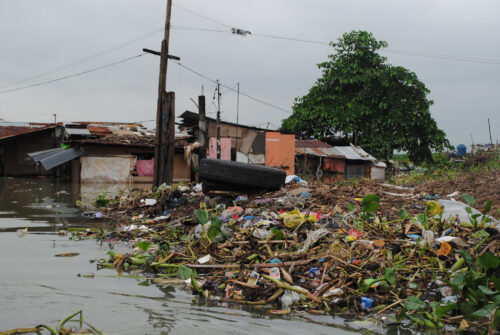USAID Launches Municipal Waste Recycling Program in Southeast Asia

By Darren Manning, Urban Development Officer, USAID’s E3/Land and Urban Office
Asian countries are responsible for more than half of the plastic waste in the world’s oceans. To help address this critical issue, USAID has launched a new program that focuses on identifying and scaling innovations to improve municipal waste recycling in three Asian countries — Sri Lanka, Vietnam, and the Philippines — which are among the world’s top five producers of plastics waste.
Improving the management of municipal waste in these countries, which border two oceans, is imperative to reducing plastics pollution that threatens human health and adversely affects the marine environment.
In late 2016, I traveled to the Philippines to meet with local organizations and finalize work plans for the Municipal Waste Management Recycling Program with implementing partner Development Innovations Group (DIG).
The Municipal Waste Recycling Program (MWRP) is a four-year, $9 million initiative to address the global problem of marine plastics pollution. Implemented under USAID’s Making Cities Work program, MWRP will provide $3.5 million in grants and technical assistance to support promising municipal waste recycling efforts in Asia, evaluate their effectiveness, and make recommendations for future USAID investments in the sector.
Tragedy and InspirationThe Philippines has an estimated population of 100 million and produces more than 40,000 tons of garbage every day, or 14.6 million tons a year, thereby making solid waste management a serious health and environmental issue. The indiscriminate dumping of garbage kills rivers and other water bodies and prevents the free flow of water causing environmental hazards and flooding.
During the trip, I visited two communities that turned environmental threats into opportunities to change behavior and inspire political action around better waste management.
On July 10, 2000, after two consecutive typhoons and the constant deluge of the seasonal monsoon, Payatas, a massive mountain of garbage on the outskirts of Manila collapsed. At least 300 people — men, women, and children who lived and worked on the mountain — were buried alive in the avalanche of garbage. As an immediate result, the Philippine government swiftly shut down the Payatas dump and passed the Ecological Solid Waste Management Act. This law sought to manage Manila’s trash problem and reduce the amount of garbage through recycling and composting programs.
A few months after the disaster, the Payatas dump was reopened, at the request of the waste-pickers who depended on it for income, and because trash was piling up in the streets of Manila. New steps were taken to reduce the steepness of the slopes thus reducing the possibility of another fatal avalanche, and pipes were installed to vent methane gas emitted by the rotting garbage. Along with extensive intervention from the public and private sector, Payatas has become a model example of how to formalize a dump into a properly managed landfill. Through government and civil society support, the surrounding waste picker community of 30,000 was formally incorporated into the management, collection, separation, and recycling of all garbage arriving at Payatas. Supporting service industries have flourished and local residents benefit from new social programs in education, health, and financial management.Thirteen years after the act was passed, less than a quarter of metro Manila’s barangays, or urban villages, have a working materials recovery facility. These recovery facilities are the lynchpin of the waste management plan. This is where food scraps become compost, glass bottles and plastics are routed to the right facilities, and residual trash is picked up and trucked to a landfill.
In the riverside barangay of Potrero in Malabon City, the solid waste gathering in storm sewer grates and clogging waterways caused constant flooding during the rainy season. During this visit, I met with the Mother Earth Foundation and the Potrero Village Council who have initiated a Reduction/Reuse/Recycling Campaign to comply with the Ecological Solid Waste Management Act and improve recovery of household solid waste. As part of the campaign, Potrero established a disaster risk reduction plan, new material recovery facilities, an environmental education campaign, and enforced household participation. This has led to successful recovery of 93 percent of Potrero’s household waste with only 7 percent of the residual waste headed to the landfill.
USAID is optimistic that the focused ongoing efforts in the Philippines, from the national to local levels, will make a sustained impact on improving solid waste management practices throughout the country. USAID’s new Municipal Waste Recycling Program seeks to support these innovative programs and others through the grants process and share the results and success stories with other countries in the region.

